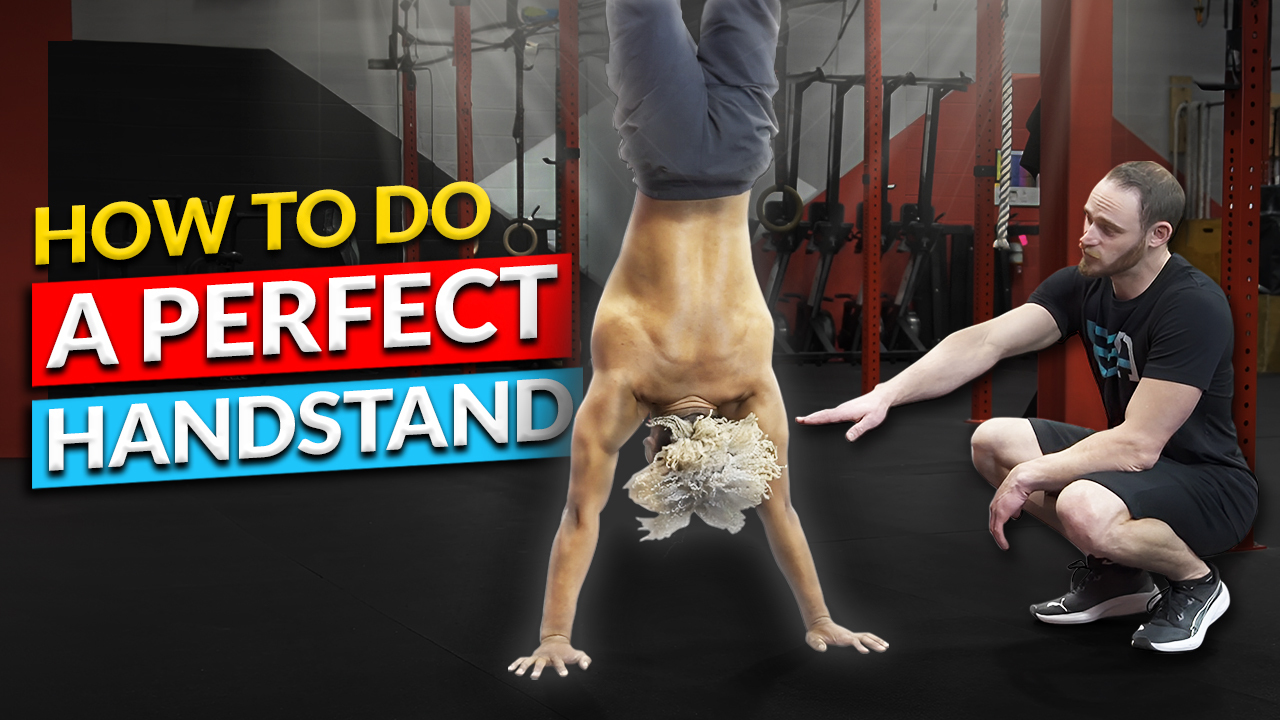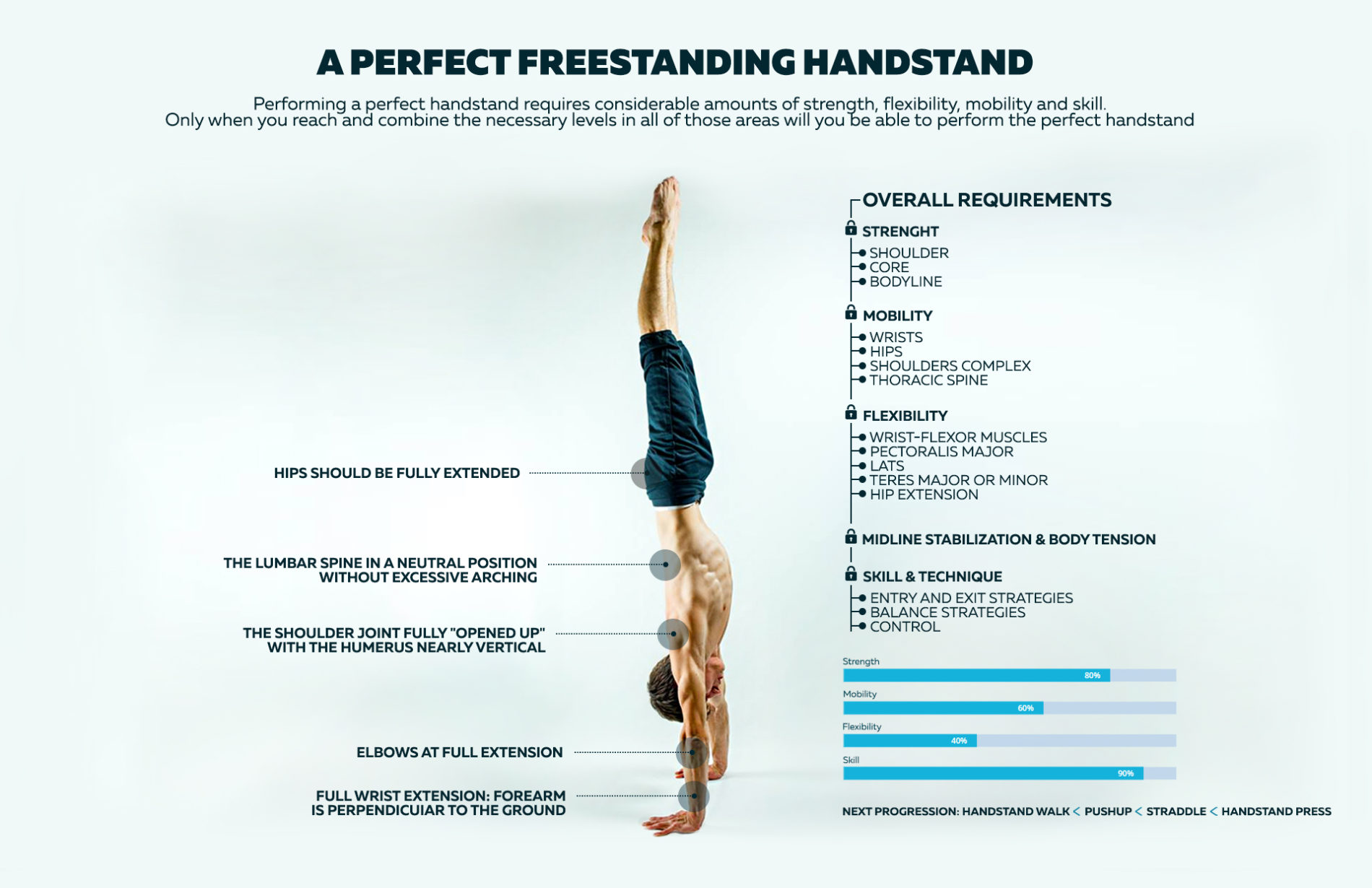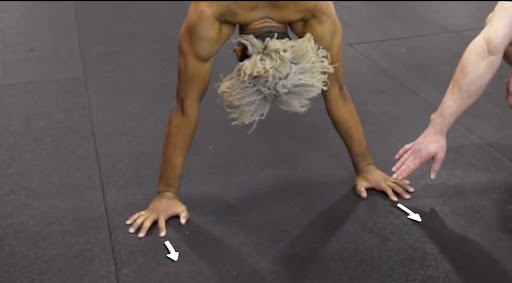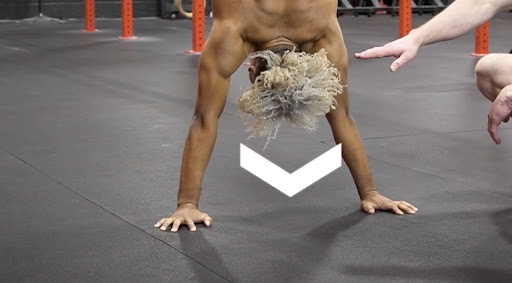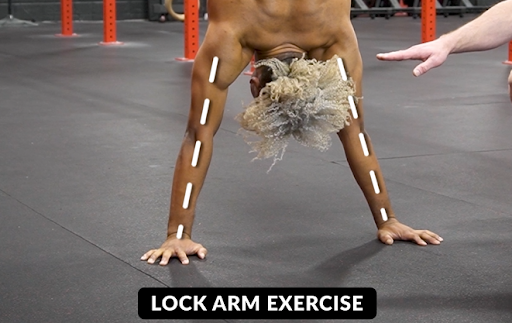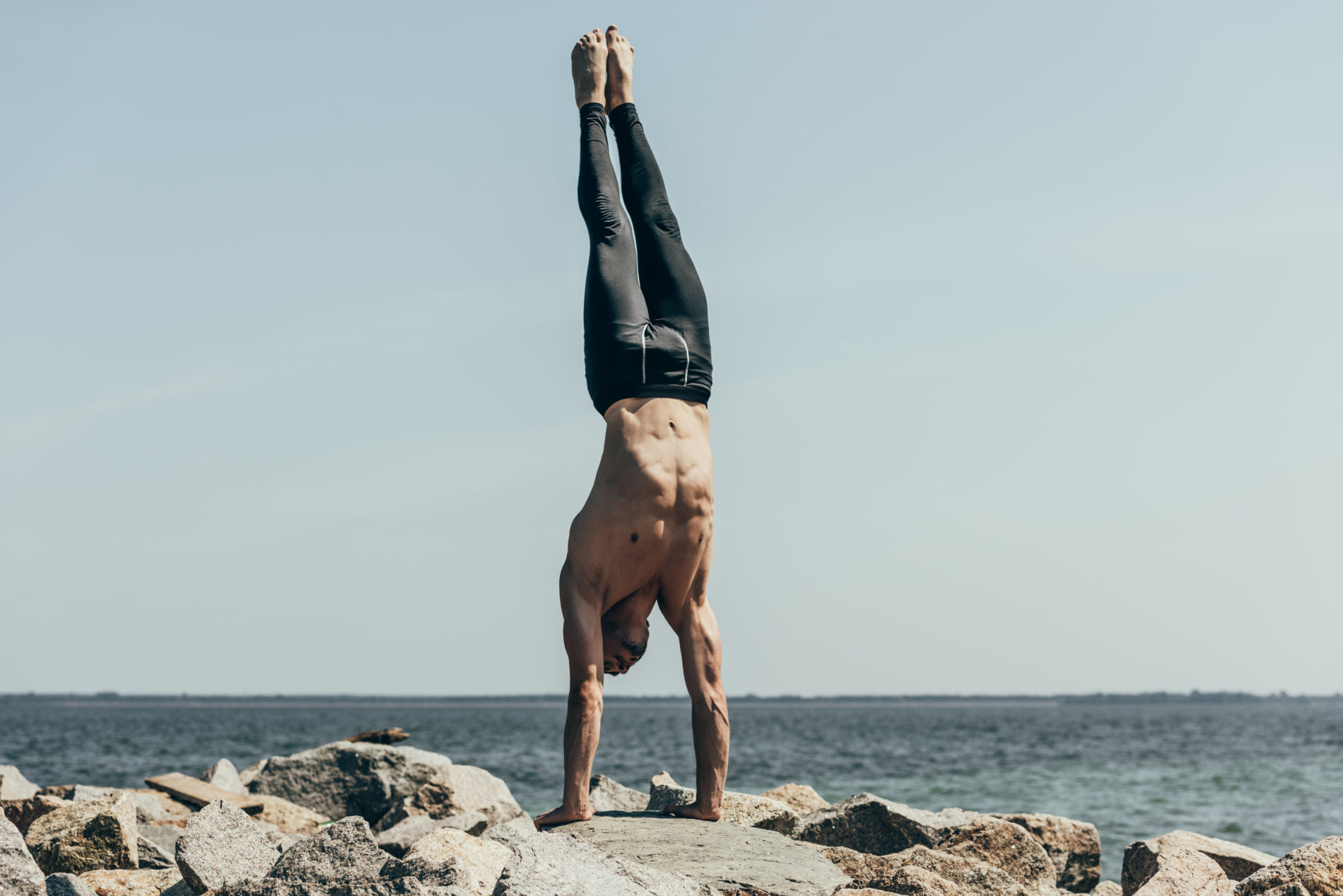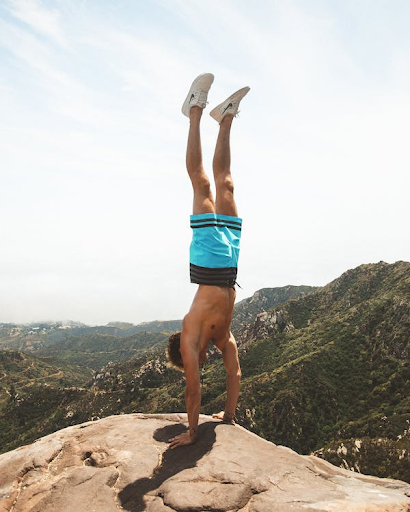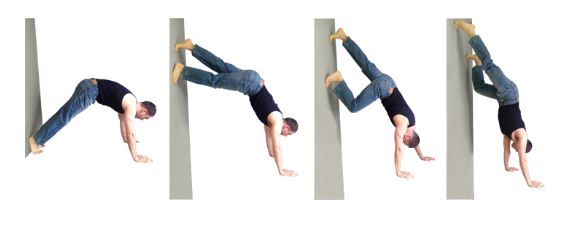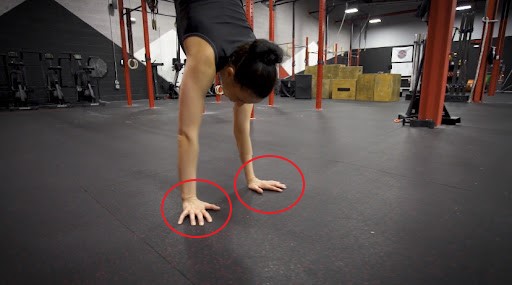Have you ever wondered how mastering the art of handstands can transform your strength, balance, and overall well-being?
Whether you’re revisiting this childhood skill or embarking on a new journey as an adult, perfecting the handstand requires more than just balancing on your hands.
A handstand is a gymnastic and calisthenics maneuver where you support your entire body upside down with your hands while keeping your body in a straight line.
This skill is essential in calisthenics because it helps develop critical elements of strength, balance, and body control.
Handstands engage multiple muscle groups, and practicing handstands improves balance and body awareness, enhancing overall calisthenics performance by providing better control and precision in movements.
In this article, we will explore the ideal handstand form, breathing techniques, the muscles involved, and the incredible benefits of mastering this skill. So, let’s dive right into it!
Related article:
- 📍 Mastering the Perfect Forward Handstand Walk: Breaking Down the Elements
- 📍 Mastering Advanced Handstand Walk Progressions: Taking Your Skills to the Next Level
What Does the Perfect Handstand🤸 Look Like?🧐
The perfect handstand is a harmonious blend of strength, balance, and form. It’s an art form that demands unwavering concentration, practice, and precision. When executed flawlessly, the perfect handstand is a breathtaking display of poise and control. Here, we break down what this pinnacle of gymnastic skill looks like and why each element is essential.
1. 🎯Alignment of the Body
The foundation of a perfect handstand begins with a strong and straight line from the fingertips to the toes. Your body should resemble a straight, vertical column.
This alignment starts with the index fingers of both hands pointing straight ahead, like the hands of a clock at 12 o’clock. Your arms must be locked at the elbows, creating a solid base to support your weight.
2. 🎯Shoulder Position
Your shoulders play a pivotal role in maintaining balance and stability. They should be elevated, with the upper arms close to your ears. This position creates a compact and robust structure that prevents unnecessary swaying or wobbling.
3. 🎯Head and Spine
Keep your head and spine in a neutral position. Avoid looking up or down; instead, focus on a point on the ground to maintain a consistent gaze. A neutral head and spine contribute to a balanced handstand and reduce strain on the neck.
4. 🎯Hips and Core Engagement
Achieving a flat, horizontal position for your hips is crucial. Engage your core muscles to help you control your pelvis and keep it aligned with the rest of your body. A hollow body shape, with the front of your body slightly curved inward, helps maintain this posture.
5. 🎯Legs and Toes
Your legs should be straight and close together, forming one continuous line with the rest of your body. Point your toes to create an elegant and graceful aesthetic. This alignment minimizes air resistance and enhances balance.
6. 🎯Finger Placement
Often overlooked, finger placement can significantly impact your handstand’s stability. Many practitioners opt for a slight bend in the first knuckle of each finger, giving the appearance of gripping the floor firmly. Additionally, spreading your fingers wide enhances your base of support and increases stability.
7. 🎯Perfect Balance
Achieving the perfect handstand isn’t just about physical alignment; it’s about finding that elusive balance point where gravity seems to stand still. This equilibrium requires constant micro-adjustments of your body, guided by your muscles and proprioception. Mastery of balance is what separates an exceptional handstand from a mediocre one.
In the pursuit of the perfect handstand, it’s important to remember that it’s not just about aesthetics; it’s about control, strength, and mindfulness. Achieving the ideal handstand is a journey that requires patience, practice, and dedication. Whether you’re a gymnast, a yogi, or simply someone seeking a fun and challenging skill, the quest for the perfect handstand is a rewarding endeavor that teaches discipline and grace in equal measure.
🤸Progression and Importance
Before diving into handstands, it’s crucial to master the fundamentals of body alignment. Handstands are considered an 📍advanced skill, falling under the category of static bodyweight vertical push exercises.
You need to understand how to shape your body correctly and engage it to maintain a straight posture before attempting handstands.
Handstands serve as the foundation for various other skills, like handstand pushups and walking handstands. Without proper body alignment and adequate strength, your handstand will falter.
📌You can watch the full video here:👇
💪Muscles Involved
Handstands engage a multitude of muscles throughout your body. These include the following:
- Wrist flexors and extensors: for balance and stability
- Ticeps: for locking out your arms
- Trapezius and deltoids: due to the overhead position
- Core muscles: to stabilize your entire body
- Leg muscles: must remain engaged for balance.
Additionally, flexibility in your lats, pecs, and wrist flexors is crucial for maintaining the correct handstand position.
😱Breathing in Handstand
Breathing might not be the first thing that comes to mind during a handstand, but it’s essential. Since it’s a static position, maintain regular breathing intervals, similar to what you’d do during exercises like the dead bug. This helps you stay stable and focused while executing a handstand.
🏆Benefits of Handstand
Mastering handstands offers a range of benefits for your physical fitness and overall well-being. Here are some benefits of a handstand:
1. ✊Body Control and Awareness
Mastering handstands helps you control your body better and understand where it is in space. When you’re upside down, you become more aware of how your body moves and balances.
2. ✊Muscle Strengthening
Handstands are a powerful exercise that targets multiple muscle groups. They strengthen the shoulders, triceps, chest, core, upper back, glutes, hip flexors, and forearm/wrist muscles. This comprehensive workout enhances upper body strength, posture, stability, and grip strength, all while requiring no special equipment.
3. ✊Coordination
Balancing upside down on a handstand teaches you how to enter, maintain, and exit the position smoothly. This improves your overall coordination and body control.
4. ✊Upper Body Strength
Handstands significantly boost upper body strength, especially in the shoulders, arms, and chest. This added strength can be beneficial for various activities and sports.
5. ✊Wrist and Shoulder Mobility
Performing handstands helps improve the flexibility and mobility of your wrists and shoulders. This can reduce the risk of injuries and discomfort in these areas.
6. ✊Advanced Skills
Once you’ve mastered the handstand, you can progress to advanced moves like 📍handstand pushups and ring handstands. These challenging exercises can take your strength and skills to the next level.
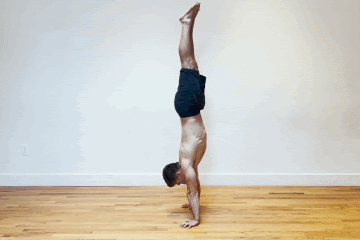
Freestanding Handstand Pushup
7. ✊Accessibility
One of the great things about handstands is that you can practice them virtually anywhere, as they require no special equipment. All you need is enough space to kick up into a handstand, making it a versatile exercise option.
Handstands offer a wide range of benefits, plus you can practice them without needing any special equipment, making them a convenient exercise choice for many people.
Related Article: 📍9 Reasons Why You Should Start Doing Handstand Push-Up
Why Are Handstands Challenging?🥺
Unlike learning to walk as a baby, mastering handstands demands time, patience, and training to develop the necessary strength and flexibility.
It also requires substantial 📍shoulder mobility, which can be disorienting when you’re upside down. The journey to mastering handstands never truly ends, as there’s always room for improvement.
🧐Frequently Asked Questions:
🔎How can I improve my balance on a handstand?
You can improve balance through consistent practice, core strengthening exercises, and by focusing on aligning your body correctly.
🔎Are handstands suitable for beginners?
Handstands are an advanced skill. It’s recommended that beginners first build foundational strength and body awareness through progressions and exercises before attempting handstands.
🔎Do handstands require a lot of wrist strength and flexibility?
Yes, handstands rely on wrist strength and flexibility. Regular wrist mobility and strengthening exercises can help prepare your wrists for the demands of handstand training.
🔎What are some common mistakes to avoid when practicing handstands?
Common mistakes include arching the back, bending the elbows, not engaging the core, and failing to maintain a straight line from fingertips to toes. Proper form and alignment are crucial for a successful handstand.
🔎How long does it typically take to learn a freestanding handstand?
The time it takes to master a freestanding handstand varies from person to person. It depends on your prior fitness level, dedication, and consistent practice. Some may achieve it in a few months, while others might take longer.
🔎Can I practice handstands if I have a shoulder injury or wrist pain?
It’s advisable to consult a healthcare professional before attempting handstands with any pre-existing shoulder or wrist issues. Depending on your condition, modifications or specific exercises may be recommended.
🔎What progressions or exercises can help me work towards a handstand if I’m a beginner?
As a beginner, focus on exercises like plank variations, wall-assisted handstands, and improving wrist and shoulder mobility. These will help you build the strength and skills necessary for a successful handstand.
🔥Conclusion
🤸Handstands offer a myriad of physical and mental benefits and can serve as a gateway to more advanced calisthenics skills.
So, whether you’re just starting or looking to refine your handstand technique, remember that practice, patience, and proper progression are your keys to success.
👊 The Movement Athlete is here to help you achieve your fitness goals while staying healthy and injury-free. Take an Assessment now and get a free, personalized plan.

